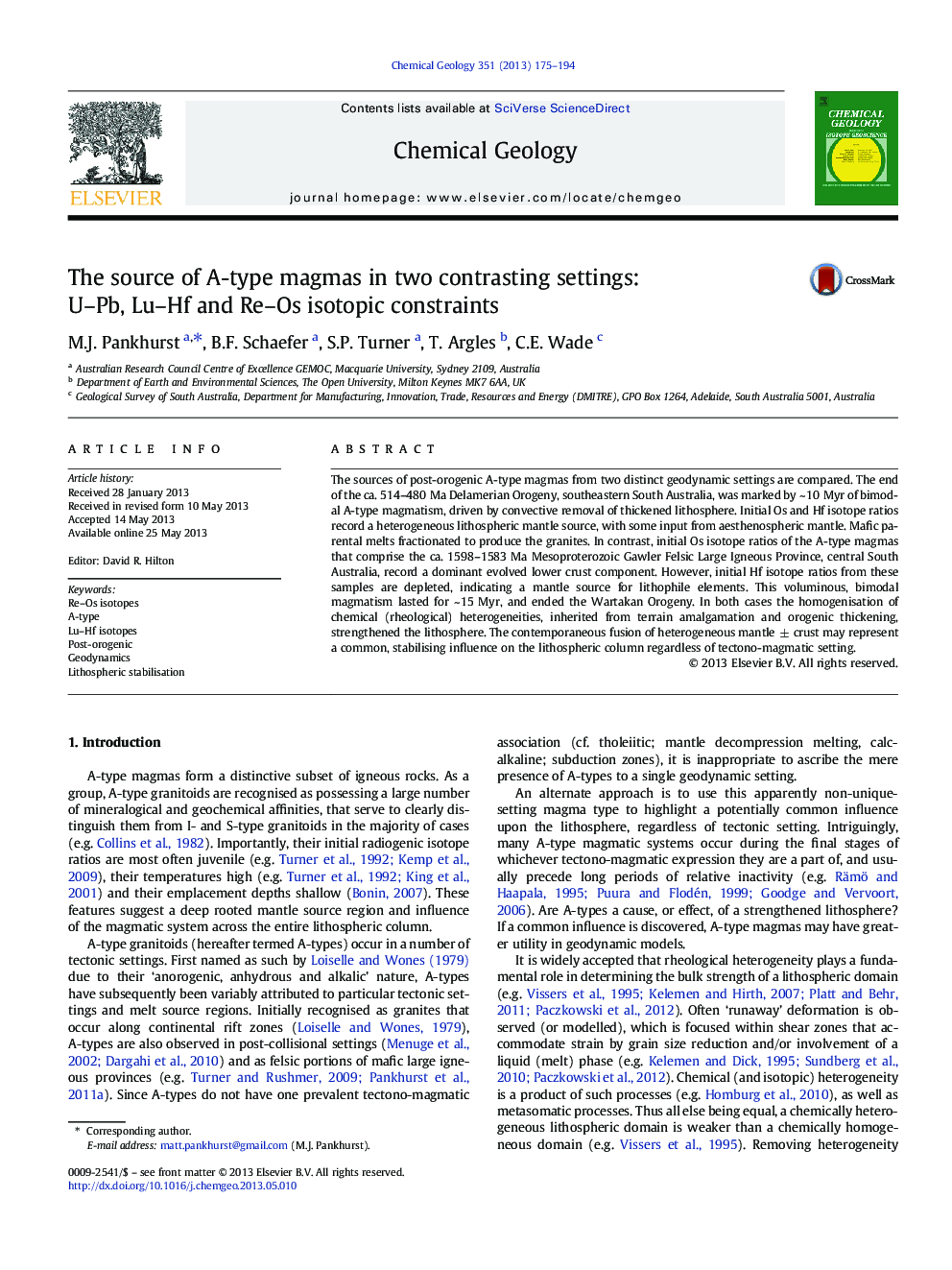| کد مقاله | کد نشریه | سال انتشار | مقاله انگلیسی | نسخه تمام متن |
|---|---|---|---|---|
| 6436915 | 1637618 | 2013 | 20 صفحه PDF | دانلود رایگان |

- Integrated Re-Os-Lu-Hf isotope constraints on the source of post-orogenic magmas
- Whole rock Re-Os isotope ratio determination of granites
- First detection of Archean rocks within the Cambro-Ordovician Delamerian Orogeny
- Homogenisation of mantle via melting may effectively strengthen lithospheric domains.
The sources of post-orogenic A-type magmas from two distinct geodynamic settings are compared. The end of the ca. 514-480 Ma Delamerian Orogeny, southeastern South Australia, was marked by ~ 10 Myr of bimodal A-type magmatism, driven by convective removal of thickened lithosphere. Initial Os and Hf isotope ratios record a heterogeneous lithospheric mantle source, with some input from aesthenospheric mantle. Mafic parental melts fractionated to produce the granites. In contrast, initial Os isotope ratios of the A-type magmas that comprise the ca. 1598-1583 Ma Mesoproterozoic Gawler Felsic Large Igneous Province, central South Australia, record a dominant evolved lower crust component. However, initial Hf isotope ratios from these samples are depleted, indicating a mantle source for lithophile elements. This voluminous, bimodal magmatism lasted for ~ 15 Myr, and ended the Wartakan Orogeny. In both cases the homogenisation of chemical (rheological) heterogeneities, inherited from terrain amalgamation and orogenic thickening, strengthened the lithosphere. The contemporaneous fusion of heterogeneous mantle ± crust may represent a common, stabilising influence on the lithospheric column regardless of tectono-magmatic setting.
Journal: Chemical Geology - Volume 351, 2 August 2013, Pages 175-194